The Anbernic RG552 is part of a wave of more powerful handhelds due to be released in 2021 and beyond. The RG552 takes Anbernic’s well established design aesthetic and adds a larger screen as well as a much needed bump in performance. The Anbernic RG552 is now available, but brace yourself for the price!
The Anbernic RG552 contains a large 5.5″ display, as the naming convention suggests. The chip used here is a RockChip RK3399. It’s a fairly powerful but power hungry hexacore ARM CPU which will smooth out many of the problematic N64, Dreamcast and PSP titles of the RK3326 era.
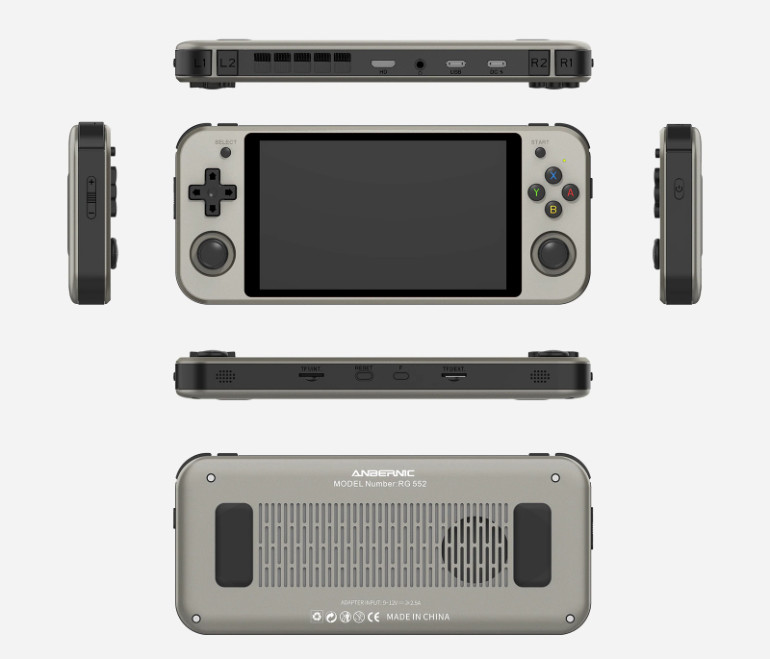
LCD
The LCD is actually a 5.36″ 1920*1152 display with a ratio of 5:3. That’s somewhere between 4:3 and 16:9 in terms of width. It’s an IPS panel and as usual with Anbernic’s new devices, it is OCA laminated. It is also touch screen enabled, which will help with navigation in the stock OS.
CHIPSET
Despite the buzz around RockChip’s new RK3566, the RG552 will contain a much older chip known as the RK3399. First announced back in 2016 and released the following year, the RK3399 is actually a more capable chip than the RK3566. Unfortunately it is also more power hungry and runs hotter. See below for a comparison courtesy of gadgetversus.com. This configuration comes with 4GB of LPDDR4 RAM.
| Processor | Rockchip RK3399 | Rockchip RK3566 |
|---|---|---|
| ISA | ARMv8-A (64-bit) | ARMv8.2-A (64-bit) |
| Microarchitecture | Cortex-A72, Cortex-A53 | Cortex-A55 |
| Release date | Q1 2016 | Q2 2020 |
| Lithography | 28 nm HKMG | 22 nm |
| Cores | 6 | 4 |
| Threads | 6 | 4 |
| Base frequency | 1.5 GHz | 1.8 GHz |
| Turbo frequency | 2.0 GHz | - |
| Energy cores | 4x ARM Cortex-A53 @ 1.5 GHz | - |
| High performance cores | 2x ARM Cortex-A72 @ 2.0 GHz | 4x ARM Cortex-A55 @ 1.8 GHz |
| Cache memory | 1.512 MB | 256 KB |
| Max memory capacity | 4 GB | 4 GB |
| Memory types | LPDDR3-1866, LPDDR4 SDRAM | DDR3, DDR3L, LPDDR3, DDR4, LPDDR4X |
| Max PCIe lanes | 4 | 1 |
| TDP | 7 W | 5 W |
| GPU integrated graphics | ARM Mali-T860 MP4 | ARM Mali-G52 MP2 |
| GPU execution units | 4 | 2 |
| GPU shading units | 64 | 32 |
| GPU base clock rate | 350 MHz | 850 MHz |
| GPU max clock rate | 700 MHz | 950 MHz |
| (Android 64-bit) Geekbench 4 single core | 1144 | 756 |
| (Android 64-bit) Geekbench 4 multi-core | 2776 | 1997 |
It’s been rumoured that a handheld with this chip was first on the cards in 2020, but heat dissipation halted development. This new image shows a grills in the back of the unit for hot air exhaust. This is the first Anbernic device to come with active cooling, a decision deemed necessary based on the heat produced by the RK3399. This addition has probably added to the cost of the RG552 quite significantly, and goes some way to explain the high price of the unit.
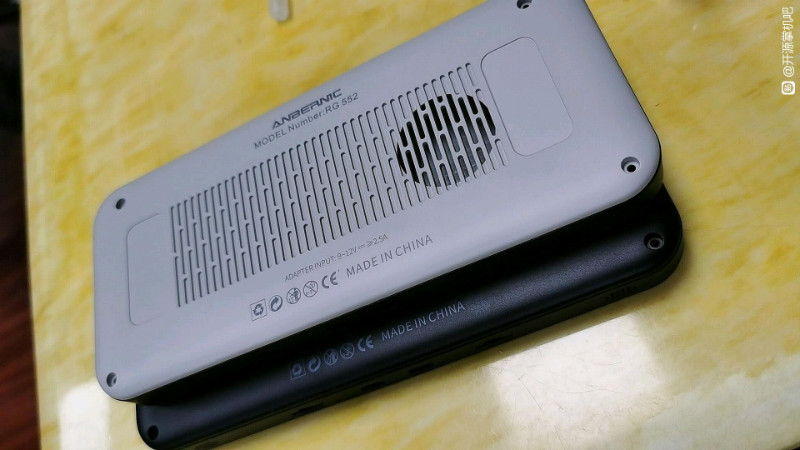
This chipset isn’t going to perform any miracles, but it will definitely help cement systems such as N64, Dreamcast and PSP firmly into “works well” territory. It’s possible that a handful of GameCube games may run at an acceptable level on this machine, and who knows, with the release of AetherSX2 there’s a very slim chance that a PS2 title or two may run OK too.
OS
The RG552 runs Android 7.0 out of the box, with the option to boot Batocera from one of the 2 microSD slots. There is a 16GB microSD card supplied with Batocera pre-installed. From what I gather the system will boot directly into Batocera if that SD card is inserted.
It will be interesting to see if Anbernic unlock the bootloader and associated kernel sources for this device. A port of Lineage to the RK3399 would be in everyone’s best interests.
OTHER STUFF
The RG552 houses two 3200mAh cells providing around 6 hours of battery life according to the specs. These can be charged by both QC and PD chargers, one of which is supplied in the box. Make sure you choose the right region to ensure compatibility with your sockets!
The device has onboard WiFi this time (finally), but it looks as though it may not support 5GHz. It has been suggested that this is the WiFi chip that the RG552 ships with (image below). If you lookup the part number BL-M8188FU3 the specs for the chip it is based on (RTL8188FTV ) only list b/g/n and the 2.4GHz frequency.
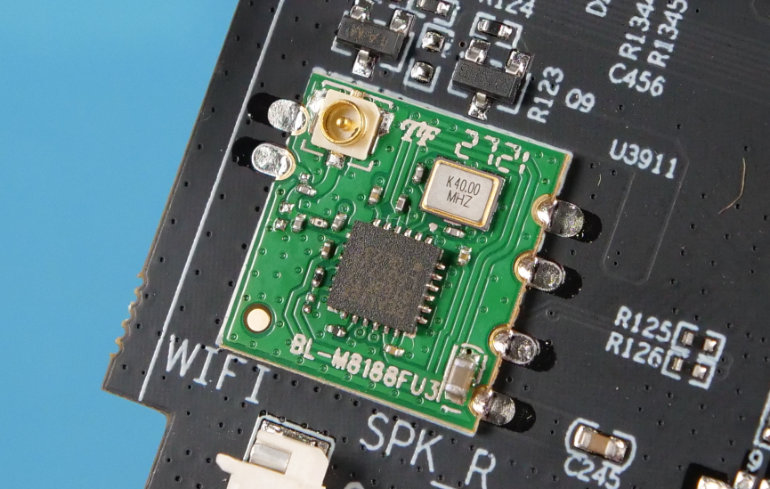
This throws into doubt how well game streaming might work on the RG552, but we will have to wait for early reviews to find out. Bluetooth isn’t mentioned in the promo material either, and it seems as though that feature is absent from the RG552.
AVAILABILITY
The Anbernic RG552 is available as of the 6th December 2021. It comes in two colour options, the usual matte black and also a light grey with black buttons. Whilst the RG552 release should be quite exciting to the retro gaming community, the price is a little unfortunate. At around $230, the the RG552 is right at the top end of “budget”, and the PowKiddy X18S offers more power at a lower price. But part of that trade off is in reputation.

The X18S has issues with both the OS and controls, and whilst black-seraph is doing a great job porting Lineage to the device, the early adopters of the X18S got something of a shit show out of the box. Anbernic’s quality of manufacture is generally very good, and any issues with the software should also be ironed out in time. $230 is a big ask, especially with budget friendly devices like the RP2+ offering similar performance for a much lower price. And of course, there’s always Odin looming around the corner.

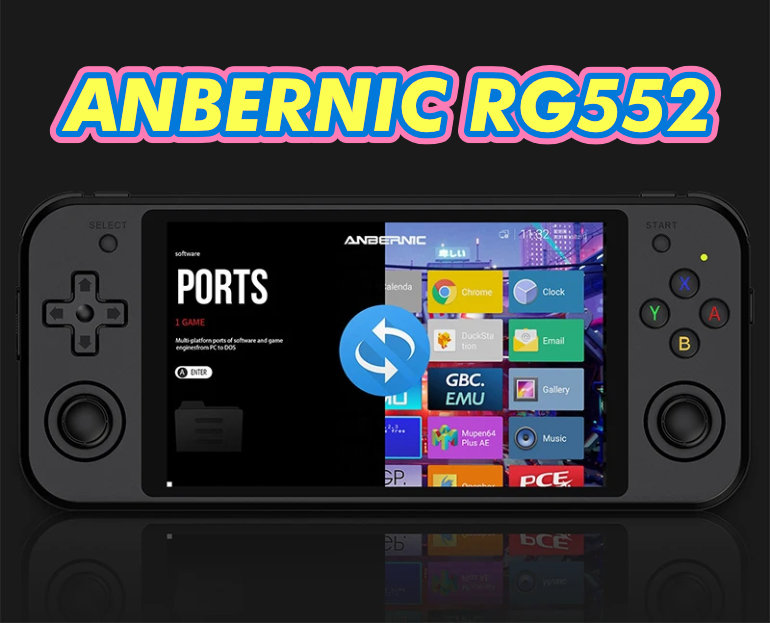
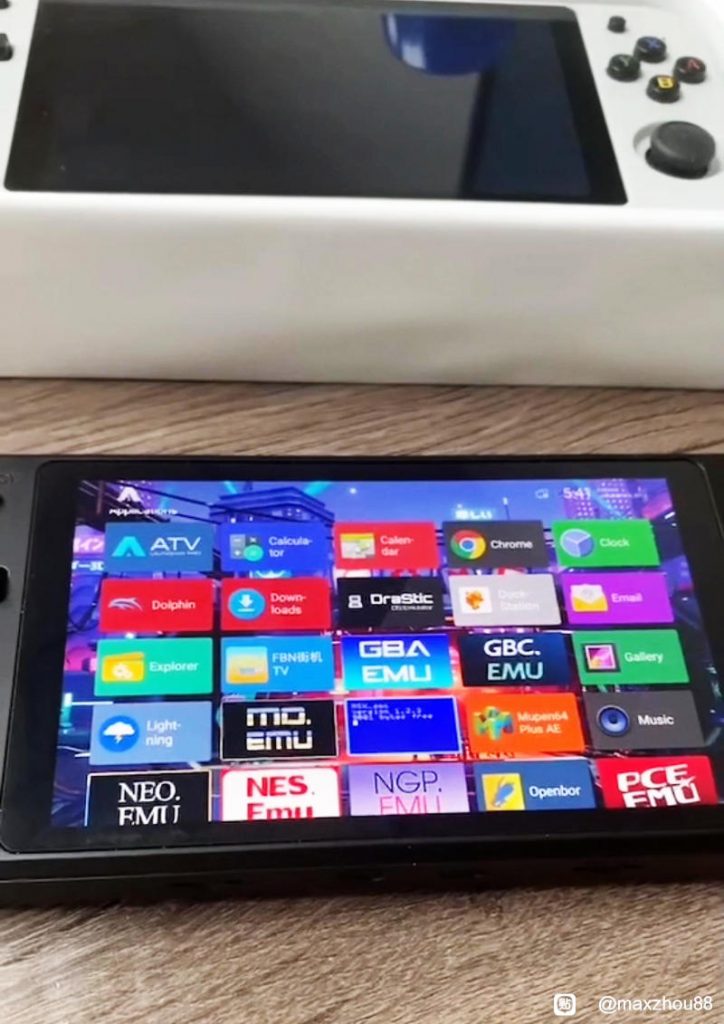
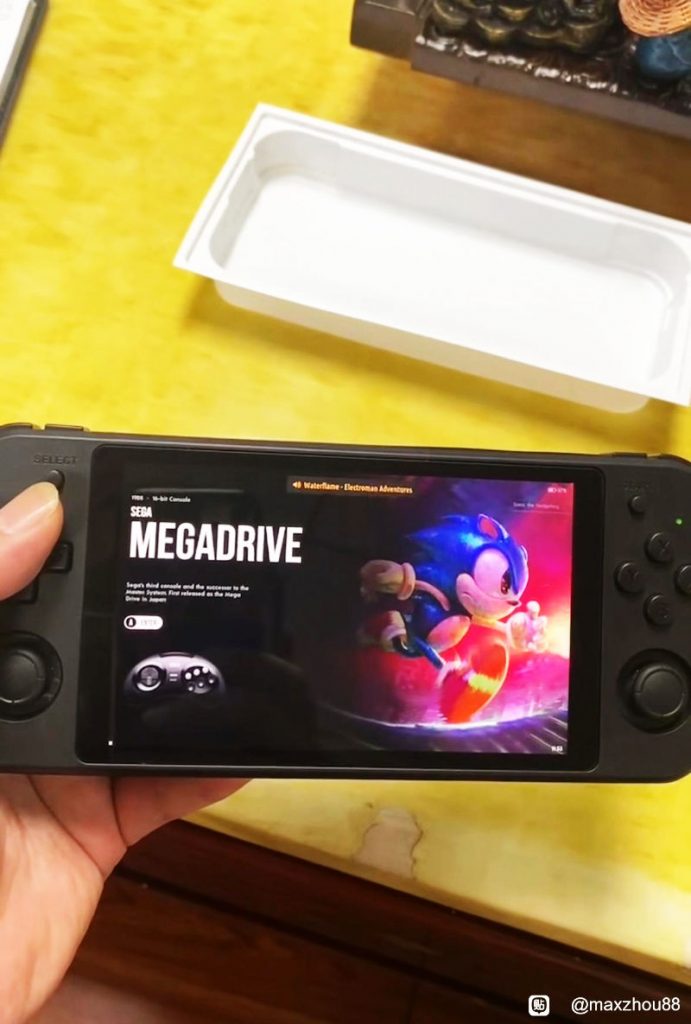
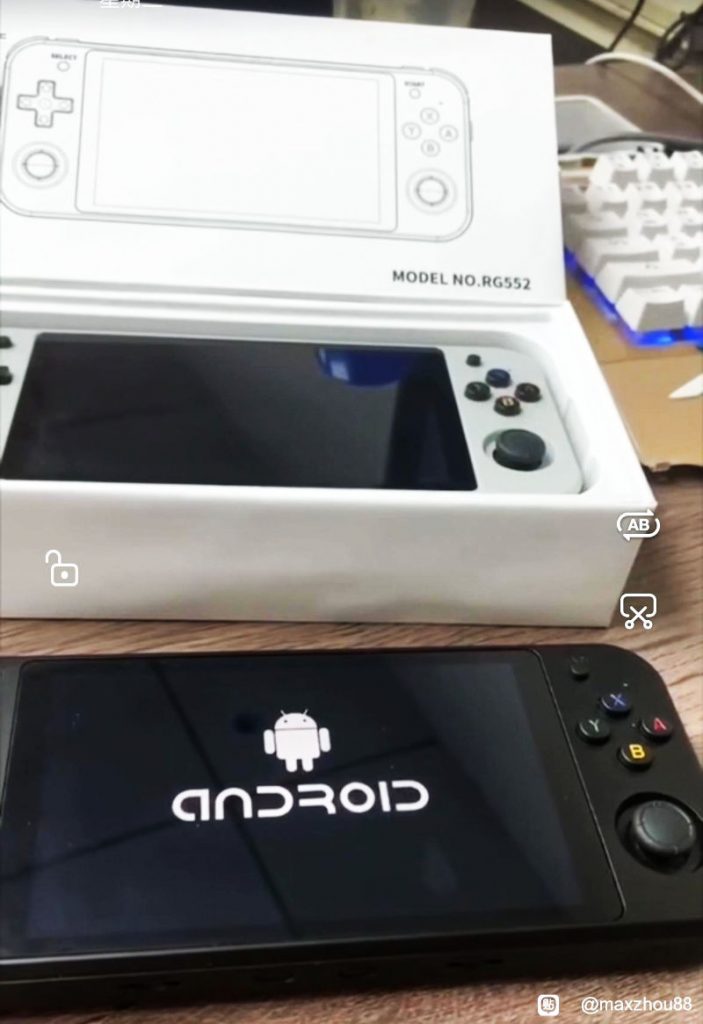
It is well and truly ridiculous that this RK3399 device costs more than an Analogue Pocket.
I mean really, it costs about the same as a Pinebook Pro and that uses the same SoC with a much larger/nicer screen, a full keyboard and trackpad, and is in a magnesium alloy case. This hunk of plastic is a total ripoff for the price, regardless of build quality.
BUT remember: the Analogue Pocket needs an add-on device to have HDMI output, that’s the $100 dock 😛
Already the RG552 seems a lot cheaper because it can do that without a dock… Nevermind the fact that an Analogue Pocket, even if it got a PS1 hardware emulator, has no dual sticks and no L2/R2. You’re very limited at the end of the day.
BTW:
Analogue Pocket: $235.39 shipped. Wait, I forgot the charger brick, that’s an added $19.99… so the total is:
Analogue Pocket: $256.78
RG552: $226.99 shipped. Has charger brick. And screen protector. Wait a minute does the Analogue Pocket NOT come with a screen protector either??? Analogue is charging stinkin $15.99 for that one.
Man the RG552 sounds like a STEAL now.
Seen a lot of people complaining about price…
Which, yes, it’s high, however what other Linux handhelds are there with at least this much power or higher for the same price or lower?
It’s hard to say without having it, but how much more powerful is it than the 351? The bigger screen is a huge plus, and being able to check off one or two more consoles worth playing is, too, but it’s almost 2x the cost of the RG351M…all in a plastic case! It might be the most powerful (might), but it really needs to be more like $175 for a P and $199 for an M.
Oh it is A LOTTTT more powerful than the 351!
But at the same time, it can’t be equally more useful… what Im trying to say is this: The necessary power required to emulate consoles increases exponentially. (As in, a lot more power each time). So to go from being able to emulate PS1 to PS2, you just need way, way too much power. Totally unlike from NES to SNES.
However there’s a good chart you can look at to get an idea of what’s inside the RG552.
One of the biggest factors is the jump from Cortex A35 (RK3326) to Cortex A72 (RK3399).
How big is this jump? Well… the A35 is weaker than what’s in a Raspberry Pi 3 (which uses A53).
The CPU power looks something like this:
A35: ====….Y
A53: ======Y===
A72: ======Y===================================
So this is 3 different CPUs all clocked at around the same speed, 1.5 GHz.
You can think of the Y as Yoshi’s Island on a decent version of SNES9x.
The = signs means how much power it has.
The A35 doesn’t quite reach the point where Yoshi’s Island plays full speed.
The A53 reaches and exceeds it by a little bit, meaning the game runs full speed with extra room to process some other things.
The A72 can run a game 3 times more demanding and still have room for more!
This is perhaps enough CPU power to go up to most PSP and Dreamcast games, but not GameCube. For Dolphin, I’d rather have an even faster Cortex, clocked at 2.1 GHz just to be triple sure!
But now comes the next question, what about GPU power? The PSP, DC and GameCube all rely heavily on GPU where SNES does not. The benchmark for this is a little harder to tell you right now because driver upgrades can result in much better performance! But from what I can find online, the RG552 has a GPU that’s almost 4 times as powerful as an RG351.
(Gadgetversus says that Mali-G31 MP2 has 20.8 GFLOPS, while the Mali-T860 MP4 has 95.2 GFLOPS)
This means that a game that ran at 20fps on an RG351 could possibly run at full speed with room for a bit more on the RG552.
Anyway, I’m just happy that everything on SNES, GBA and PS1 will FINALLY be fully playable with extra room to rest easy knowing there won’t be any drops anywhere.
You don’t need that much power, nor such a big screen for excellent SNES, GBA and PS1 emulation – a chipset like the Unisoc Tiger T310 from the RP2+ is quite enough (and way cheaper). I think Ambernic is aiming at PSP/Dreamcast, and even PS2, enthusiasts here.
All that talk and you fail to realize this has half the power of the T310 and a third the power of the t618. This thing is way way to expensive and no, its not much of an upgrade over the RG351.
And you fail to remember the single most important thing: we’re talking about Linux handhelds and before you say Steam Deck, they must fit in the pocket btw.
Unless those SoC’s you talk about are already in some Linux handheld?
I don’t agree: at this price, you can almost get a Steam deck which is even more powerful. Marketwise, this is not very a smart move from Ambernic: people who can afford that much for a handheld would rather buy more powerful devices for just a few $$ more.
There are a few problems with that 😛
1 – The Steam Deck is $400 at minimum, that’s not “just a few $$ more”. Plus, you’re not gonna use a Steam Deck just for emulation with its own 64GB or MicroSD, you’re better with the 256GB version because there’s no way you’re gonna avoid PC games on something like this.
2 – It’s a lot bigger, you can’t carry it in your pocket. The RG devices are specifically appealing because you can just put it in your pocket and leave the house. Even if the Steam Deck was only $250, it’s just not comparable.
As for the RP2+ comment, I mean sure, if the RG552 came with a Tiger T310, and was cheaper, that would be a lot better and still be more than enough for full SNES. GBA and PS1 emulation! (Doesn’t it have an A75 which is a lot faster than an A72? Single core performance would be amazing) but because the RP2+ is Android based, that puts it at a great disadvantage.
Linux runs pretty awful, Android is the future for these emulation handhelds, the real reason anbernic came with this old piece of garbage is because they do not want to invest in software development like others do for Android and like what they did before, just stealing software work from OGA on rk3326 chips, they are doing it again but greedier by asking for more money.
This is a bit of BS: Android is just as good as Linux when it comes to emulation – ask anyone familiar with LineageOS and custom ROMs. The real problem with Android are the official ROMs which usually come with tons of services (such as Google Apps) which reduce global performance. But if you had a GPD XD+ with Black Seraph’s custom Android, you’d most probably change your mind about Android.
I would love to change my mind about Android!
Though at the same time the only way for that to happen is if I myself went and actually spent the money on a device like this to be able to test it… it’s kind of a difficult, expensive thing to bet on. I would need to be blessed by knowing someone with a GPD XD+ or something for me to go and test it.
If the latency on Android was the same as on a Raspberry Pi or an RG351, then… the next problems would be the D-pad placement on the RP2+, useless screen for PSP and less ideal for GBA than the RG552. Not sure about button quality as I’ve never held one. Perhaps LineageOS will get ported to RG552, and I’d be very pleasantly surprised if it made Linux obsolete.
Ok, I admit the comparison with Steam deck was not the best example. Still, I find that the RG552 is too expensive for what it is : a not so portable handheld (you mentionned the size? It’s way bigger than a RP2+, you know 🙂 ) with a not so modern chipset (5 years old).
5 year old soc that runs on android 7….
Not a fan of active cooling. However, I do love the colored buttons (OLED-style buttons for active remapping would be **killer** even for an extra $30 on the price (or tack it onto some super-premium metal, OLED model)
Oh wow, once again another mediocre device. Stick now to a steam deck or a hacked Nintendo Switch
The company keep farming on your pocket with shitty specs, just buy a phone with small portable controller.
lol why are you here? That wouldn’t be a very cool handheld.
Very well said!
Not it’s not, it’s silly comment. If the two of you don’t understand why people want a dedicated system with descent specs with a builtin controller, hey that’s your ignorance. There’s no need to be insulting & unpleasant about it.
Active cooling ??? Noooooo
Dual boot please, Batocera and Android.
Awesome!! I really hope it’s Android. I feel like there hasn’t really been anything to de-throne the GPD XD yet.
Android is a step back that prevents taking real advantage of the device for emultation…
That is an opinion not everyone shares. Android is desirable for many reasons on a device like this.
Desirable for what? for shitty apps?
A device like this is meant for playing only, stop wanting to do many things with a device like it were a computer. If you want that shit from google, just buy a phone, you have many for 100€ or less.
Hey if you don’t get it, that’s ok. Your ignorance is only your problem.
good news thanks 🙂
The RK3399 sounds like a beast 😛
If not a CM4 handheld, I think I’d take that lol. But yes, heat sounds like trouble, and I really hope they don’t use a fan.
The screen sounds great too! All these upgrades sound like type of thing we really need, and yes I like having a lot more pixels even for emulation cause it will make the menu look prettier and have more room for special effects like CRT shaders!
My only worry after trying the RG351V now is the quality and feel of these handhelds. I wish somehow that we had “specs” to define things like shell texture, button travel distance, resistance, clicky/mushyness and tactility.
Cm4 handhelds coming. I’ve got a kickstarter for one currently titled Lite Berry . A cm4 in a switch lite .
Isn’t there a new revision of the RK3399 that has a better power profile? Thought I read that somewhere…